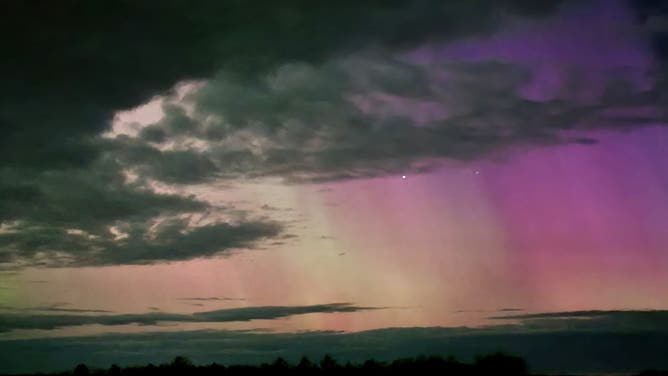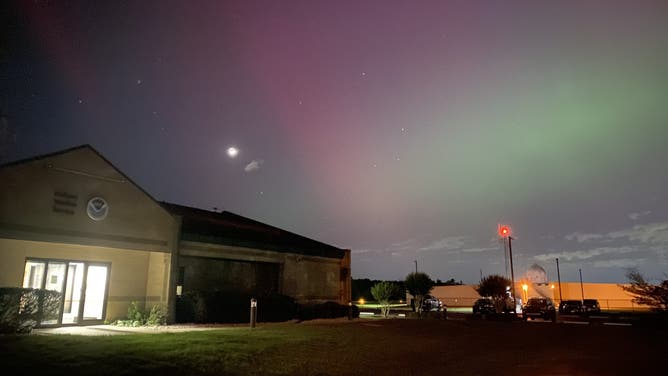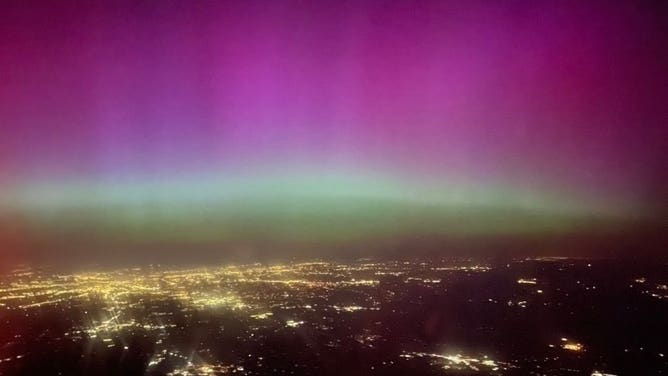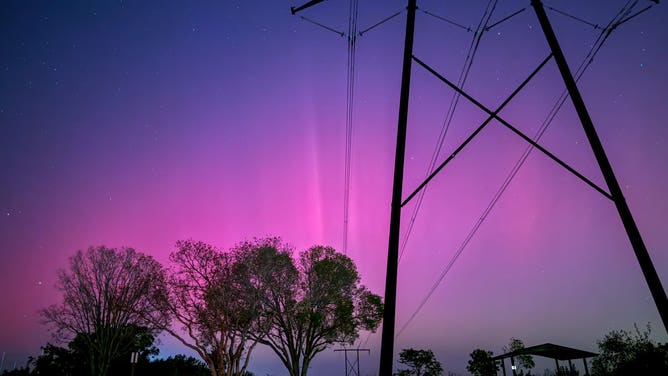See the sights as an extreme geomagnetic storm triggers jaw-dropping auroras around the world
Space weather experts consider the event to have had the most significant impact on the globe since Halloween 2003. The solar event led to power outages in Sweden and electrical grid damage in South Africa.
Northern lights visible from Europe
Friday's aurora was visible across much of Europe. NOAA’s Space Weather Prediction Center classified the event as a G5, the highest level on its geomagnetic storm scale.
A series of coronal mass ejections (CMEs) set the stage for a brilliant display of auroras Friday seen by millions from areas that rarely get to see such a show.
NOAA’s Space Weather Prediction Center classified the event as a G5, the highest level on its geomagnetic storm scale.
Hues of greens and pinks were reported in the skies above New Zealand, China, most of Europe and the United States as the storm reached levels not seen since an event around Halloween 2003.
The previous solar event led to power outages in Sweden and electrical grid damage in South Africa – impacts that space experts warned were possible with the latest geomagnetic storm.
Companies and agencies that have interests in space operations, communications and electrical grids on the ground were paying close attention to the event.
As of Friday, none had reported any interference from the plumes of particles hitting Earth’s atmosphere.
EXTREME SOLAR STORM ARRIVES, TRIGGERS NORTHERN LIGHTS AS FAR SOUTH AS FLORIDA
As the Sun set on Friday evening, sightings of the Northern Lights were reported across North America from Maine through New Mexico and as far to the south as Florida.
The National Weather Service in Jackson, Kentucky, advised interested skywatchers to look north, get away from light pollution and give your eyes a couple of minutes to adjust to the surroundings.
The most brilliant displays were from cameras and phones that were on night mode, which allows for a long shutter speed.
"We found it was easier to view through our phone cameras," meteorologists said.

Outside of the NWS office in Caribou, Maine.
(FOX Weather)
The NWS office in Caribou, Maine, started to see glimpses of the Northern Lights around 8 p.m. but became exquisite two hours later.
Forecasters in Central Alabama were treated not only to an aurora but also the International Space Station traversing through the night's sky.
NASA was closely monitoring the event for the seven astronauts who are onboard the ISS, as orbiters outside of Earth’s atmosphere have limited protection from radiation. The space agency did not report any anomalies during the event.

Forecasters at the NWS office in Calera, AL saw the aurora and the space station.
(@NWSBirmingham / FOX Weather)
Witnesses to the historic event were also in the air when the sky became dark enough to see the Northern Lights.
FOX Weather Exclusive Storm Tracker Mark Sudduth was returning home to North Carolina after a trip to survey hail over the Plains when he spotted the aurora while in the sky over South Carolina.
"Stunning aurora over South Carolina as I head back to Wilmington from Dallas-Fort Worth," Sudduth stated.

FOX Weather Storm Tracker Mark Sudduth caught a stunning view of the aurora over South Carolina while in a plane.
(Mark Sudduth / FOX Weather)
The combination of clear skies and a waxing crescent Moon likely led to the display being visible from most of the continental U.S. for the first time since World War II.
The sighting of the event from Miami, Fort Lauderdale and Key West surprised even the best forecasters.
NWS meteorologist Luke Culver was one of many who took photos from South Florida.
"Unbelievable! I never would’ve thought I’d see it…the aurora in South Florida," Culver posted on X.

Fort Lauderdale Northern Lights
(Luke Culver / FOX Weather)
7 THINGS TO KNOW ABOUT THE NORTHERN LIGHTS
For those under cloudy skies or near light pollution, chances to see an aurora were expected to continue through the weekend.
Geomagnetic storms have become more numerous over the last year as the Sun reaches the maximum phase of its solar cycle.
A solar cycle is a sequence the giant star's magnetic field goes through every 11 years, where the field flips. Solar Cycle 25 began in 2019 and could last until 2030, with peak years being 2024 and 2025.
Video of the aurora from the UK
Auroras were spotted across Europe including in Scotland, the Czech Republic and Germany on Friday evening.






